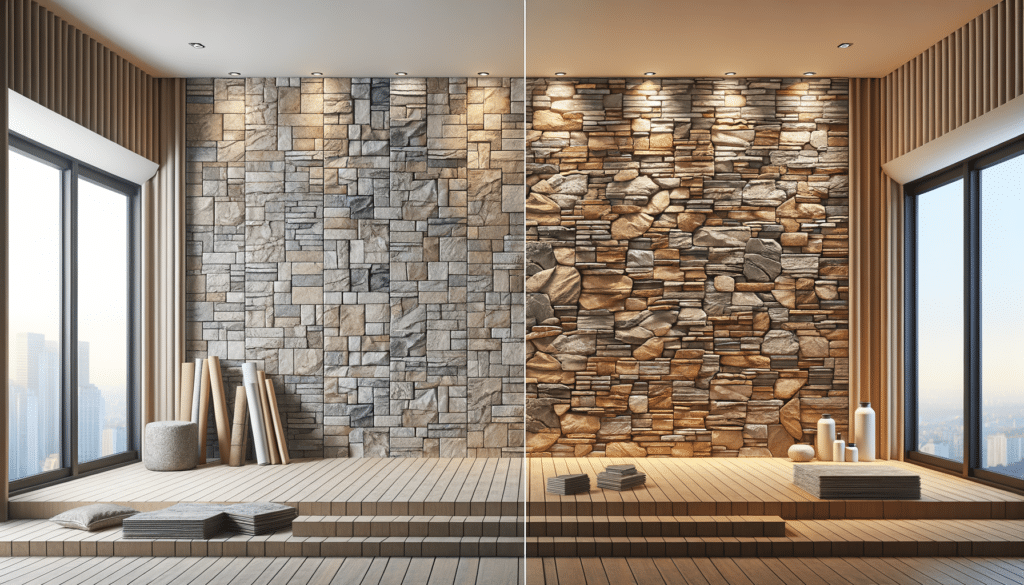The Rise of Faux Stone Panels in Modern Design
Faux stone panels have become a popular choice in both residential and commercial design due to their versatility, affordability, and aesthetic appeal. Unlike natural stone, faux stone panels offer a lightweight alternative that can be installed with ease, making them accessible for a wide range of projects. Their ability to mimic the appearance of natural stone while being more cost-effective has contributed to their rise in popularity.
One of the key advantages of faux stone panels is their affordability. Natural stone can be expensive, not only in material costs but also in labor for installation. Faux stone panels, on the other hand, are manufactured from materials such as polyurethane, which are considerably cheaper. This cost-effectiveness allows homeowners and businesses to achieve a high-end look without breaking the bank.
Additionally, faux stone panels are incredibly versatile. They can be used in a variety of settings, from interior feature walls to exterior facades. Their lightweight nature means they can be installed on surfaces that may not support the weight of natural stone, providing more flexibility in design.
In terms of aesthetics, faux stone panels are designed to closely resemble natural stone, with a wide range of colors and textures available. This allows for a customized look that can complement any design style, from rustic to modern. The panels are also designed to be durable and resistant to elements such as moisture and UV rays, ensuring they maintain their appearance over time.
Installation and Maintenance: A Simple Process
One of the most appealing aspects of faux stone panels is their ease of installation. Unlike natural stone, which requires skilled labor and specialized tools, faux stone panels can often be installed as a DIY project. The panels are typically designed with interlocking systems or can be adhered directly to surfaces, simplifying the process.
The lightweight nature of faux stone panels means they can be easily handled and positioned, reducing the physical strain often associated with heavy natural stone. This ease of installation not only saves on labor costs but also reduces the time required to complete a project.
Maintenance of faux stone panels is minimal compared to natural stone. They do not require sealing or special cleaning products, making them a practical choice for busy homeowners or commercial spaces. Regular cleaning with mild soap and water is usually sufficient to keep them looking their best.
Furthermore, faux stone panels are designed to withstand various environmental conditions. They are resistant to moisture, which prevents issues such as mold or mildew growth. This makes them suitable for use in areas prone to humidity, such as bathrooms or kitchens.
Environmental Impact and Sustainability
As environmental consciousness grows, many consumers are looking for sustainable building materials. Faux stone panels offer an eco-friendly alternative to natural stone, as they are often made from recycled materials and require less energy to produce and transport.
The production of faux stone panels involves fewer natural resources, reducing the environmental impact associated with quarrying natural stone. Additionally, because they are lightweight, transportation emissions are lower compared to heavier natural stone materials.
Many manufacturers are also adopting sustainable practices in the production of faux stone panels, such as using non-toxic materials and minimizing waste. This aligns with the growing trend towards green building and sustainable design, making faux stone panels a responsible choice for environmentally conscious consumers.
Furthermore, the durability of faux stone panels means they have a long lifespan, reducing the need for frequent replacements. This longevity contributes to their sustainability by minimizing waste and the need for additional resources over time.
Creative Applications and Design Ideas
Faux stone panels open up a world of creative possibilities for both interior and exterior design. Their versatility allows them to be used in a variety of applications, from accent walls to fireplace surrounds, and even outdoor landscaping features.
In interior design, faux stone panels can create a focal point in living rooms, bedrooms, or entryways. They add texture and depth to a space, transforming plain walls into stunning features. For those looking to add a rustic charm to their home, faux stone panels can mimic the look of a traditional stone fireplace, creating a cozy and inviting atmosphere.
For exterior applications, faux stone panels can enhance the curb appeal of a home or building. They can be used to create striking facades, accentuating architectural features or adding visual interest to otherwise plain exteriors. Additionally, they can be used in landscaping to create garden walls, planters, or outdoor kitchens, blending seamlessly with the natural environment.
The range of colors and textures available in faux stone panels allows for endless design possibilities. Whether aiming for a sleek, modern look or a more traditional, rustic feel, there is a faux stone panel to suit any style.
Future Trends and Innovations
As technology continues to advance, the future of faux stone panels looks promising. Innovations in manufacturing processes are leading to even more realistic textures and finishes, further closing the gap between faux and natural stone. These advancements are making faux stone panels an increasingly attractive option for designers and homeowners alike.
One trend to watch is the integration of smart technology into faux stone panels. Some manufacturers are exploring ways to incorporate features such as LED lighting or temperature control, adding functionality to their aesthetic appeal. This could open up new possibilities for creating ambient lighting effects or enhancing energy efficiency in buildings.
Additionally, as sustainability becomes a greater focus in design, we can expect to see more eco-friendly options in faux stone panels. This may include the use of biodegradable materials or the development of panels that contribute to energy conservation in buildings.
Overall, the future of faux stone panels is bright, with continued innovation and a growing emphasis on sustainability and functionality. As these trends evolve, faux stone panels are likely to remain a popular choice for those seeking a versatile and stylish design solution.





